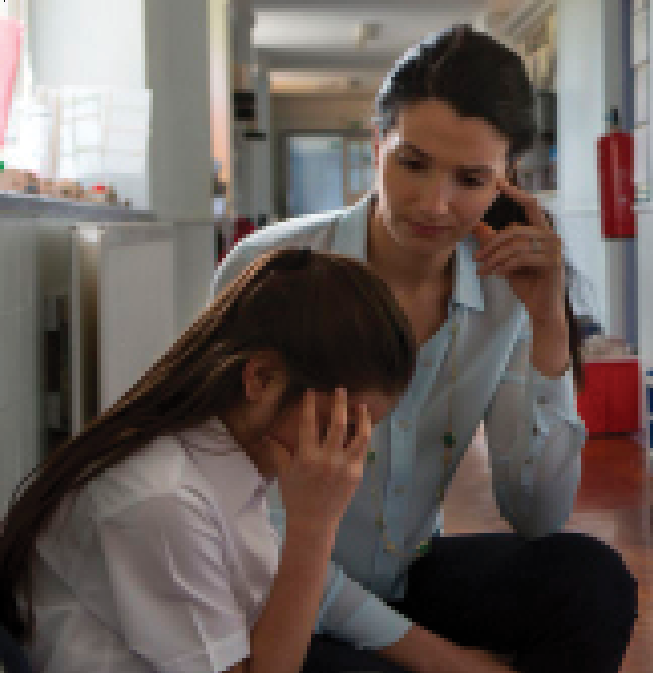
What is it like to be a child in care in school? Imagine you are this child starting a new school, perhaps your school. The fact that you have survived abuse and neglect will not be uppermost in your mind. The key thing will be the immediate: these new people, this new space, how to read the situation and work out the rules. So, to that extent you are not much different from a new teacher with a new class. You may actually be much quicker to read the patterns than this new teacher, because you’ve had to work hard to survive this far, had to learn how to avoid sudden violence, get your needs met amidst the chaos and build walls to protect you from the silence, from the times no one came and from all the times no one was there.
The problem is that these skills are not on the curriculum, and so when it comes to learning, the part of your brain that is needed to focus on maths, is too busy dealing with potential threat and managing the reverberations of yesterday, when you were taken from your home and your siblings to somewhere a social worker you met for the first time said would be better and safer. When your new teacher tries to make the connections, you may not be there, may not yet feel safe enough to learn.
It is essential that we support children in care and those who work with them by giving them access to key information about how the brain works, how enough stress can drive its learning but how toxic stress created by abuse and neglect can damage it. In healthy child development, the baby learns to manage the stress of entering a strange new world by attuning to a key care giver. Through this ‘attachment’ relationship the child learns. Children in care and many others miss out on this strong, safe baby-parent attachment bond.
For schools and settings, understanding attachment and trauma cannot be seen as an optional extra:
Schools and other education providers should ensure that all staff who may come into contact with children and young people with attachment difficulties receive appropriate training on attachment difficulties.1
‘Designated teachers must…understand the impact trauma, attachment disorder and other mental health issues can have on looked-after and previously looked-after children and their ability to engage in learning.’2

As with all new guidance, there is the issue of how to implement it in schools and settings already facing multiple challenges. Virtual Headteachers for children in care – a statutory post in all local authorities from 2015 – have concerned themselves with this question since the post was first introduced. How and why do schools take on attachment and trauma? There are really two reasons: attachment is at the heart of learning and not understanding it is not good for children or for adults, in both cases leading to additional and sometime overwhelming stress. On the other hand, when schools gain an understanding of the ‘basics’ of brain development, attachment and trauma, it frees up adults to be creative and responsive to children’s needs in their context. The ‘basics’ are not complex and have been summed up as ‘The brain is survival oriented and pattern seeking’, or ‘Connections on the outside of the body build neural connections on the inside’.3
So, let’s go back to our new teacher and her new child in care. In response to whole-school-training from the Virtual School’s educational psychologist, who provides follow-up consultations, the new teacher creates an environment for optimal brain functioning in her classroom and she knows why she is doing what she is doing. For example, the teacher works with the foster carer to make a space in the classroom with objects that the child associates with the foster carer and safety. They both use the same language to help the child name difficult feelings and seek out a safe space to calm down. The child in care finds a safe pattern and with consistent and persistent support from the adults around her, begins to normalise to this pattern. For this child, the downward spiral of school exclusion and care placement breakdown is stopped. As well as the change for the child, the costs of residential care and special school education are saved. As a Virtual Headteacher, I saw this hopeful pattern created by the work of dedicated schools and allied professionals over and over again.
The approach did not rely on rules, discipline, behaviour policy – the focus was on learning. In this respect, helping children to overcome trauma and abuse is like helping children to learn anything: it really helps to build from a sound understanding of the basics. In reading we might begin with phonics; in dealing with trauma we begin with attachment. In the past, teachers who had felt disempowered when their own rote learning methods did not work, found that understanding phonics unlocked their ability to teach reading. Teachers working with children who have experienced neglect and abuse have found understanding attachment and trauma has a similar impact:
‘It gave me a light-bulb moment about children I knew in school, the way they behaved and how I responded. From then on, my mind-set started to change.’ Deputy Head
‘It took a series of children with needs that we just found hard to identify until we started to apply attachment theory thinking. And it just unlocked these children and made us able to understand what was going on with far greater clarity. As a result, we got to make much more progress with them.’ Headteacher
‘Even if we were to express it in terms of crude economics (and it is about far more than that), there is no way a school can afford not to be doing this work. These children place demands on the school system which, if not properly addressed, far outweigh the demands of learning to manage and work with them properly’ Headteacher4